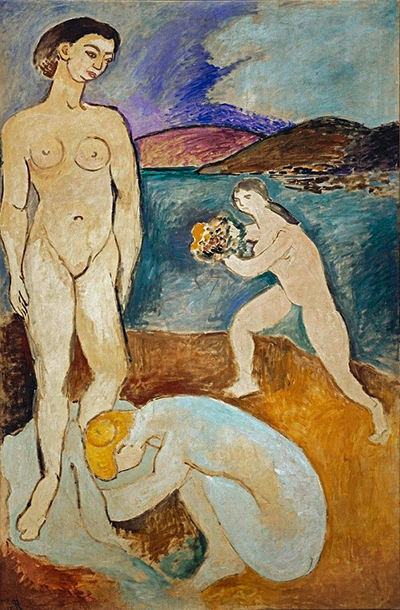Henri Matisse is largely considered as one of the best colourists in the 20th century, and a close rival to Pablo Picasso in terms of his innovations. Le Luxe is an interesting art to the critic that is preoccupied with Matisse's art evolution.
Le Luxe II's statement is more compact, articulate and simplified as compared to Le Luxe I. Le Luxe is one of Matisse's most serene pieces of work. Its subject matter is three women that are naked in a landscape, and its title Le Luxe carves itself into a tradition that has been long standing for displaying women that are bathing in a natural landscape. The artwork's motif is a traditional and fascinating image that depicts untainted happiness in a paradisiacal, mythical Arcadia.
Henri Matisse's art was among the first of his generation to create two versions of an artwork with the same motif. These two versions have the exact same scale. Le Luxe I focused at Centre Pompidou and is painted by the use of loose, dry brushstrokes and oils. Le Luxe II is painted by the use of uniformly coloured planes and distemper. By doing so, he was able to test various modes of expression throughout these paintings.
Le Luxe contains several themes but the most important one is the theme in which the male figure is banished with all its implications. Indeed, from that point onward, Matisse rarely uses the male nude appearance in his works except for the piece of art, Music. To get to the expressive heights of the final version of Le Luxe, several powerful features had to be sacrificed. Even the slightest of a brushstroke indicating impressionism depicts Matisse's reluctance to shed many of the techniques he learned and received during his youth. The penumbras that surround the figures in Le Luxe I are entirely gone in the sketch. Additionally, the pale blue green copper-oxide of the kneeling figure, Matisse's brilliant colour concept, was ruthlessly omitted from Le Luxe's final version to give it a unique serenity.
By doing so, the artwork presents a modern Aphrodite that is risen from the sea, narcistic yet erotic, made only for the eyes, supplications and attentions of her own sex. The artist gives the viewers insight into his consummate skill of being a monumental draftsman. He combines this with his dexterously controlled genius in creating contrasting colours to obtain a maximum of poetic and expressive effect.




